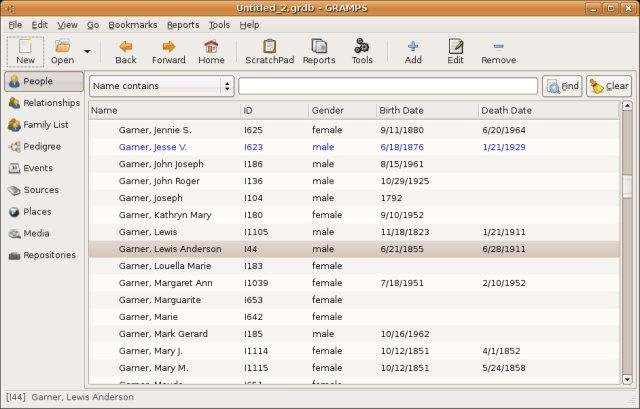

I’ve been thinking about the Ancestry dialect of GEDCOM that (Cindy) and (Enno) have described. What form Topola Viewer expects to see for URLs is a question for their forum. We’ll have to ask (Kari) if SuperTool can be used to rewrite _WLNK Events into URL objects.

Normally, the Gramps GEDCOM import is very conscientious about preserving data it doesn’t recognize.) ( Is the TITL data discarded? Please look for a custom attribute in the Event Editor for the TITL data. (URIs are defined structures in the new GEDCOM7 specification but not in the original 5.5.1 version.) Maybe the GEDCOM Extensions import can be adapted to put the _WLNK data into a comparable Gramp URL object so that the Title is not discarded? So Ancestry probably has implemented a non-standard dialect of GEDCOM so that they support weblinks. Generally, a leading underscore in a block identifier indicates a custom data structure. Since it sounds like the GEDCOM is importing _WLNK into Person object Events (they might also exist for Family objects), that data should be compatible with Gramps URLs. I’ve seen 5.2 targeted changes that will extend URLs to other objects. However, it is only accessible from the People, Place & Repository objects in the current release. The Gramps data model has a special URL structure for Internet links. I hear you say possibly that this is a Topola Viewer issue but thought I would raise it here just in case there might be a workaround (I am thinking Isotammi) I am not sure why it is being stored as an event because information is lost anyway by putting the URL into the Description field then the associated TITL has no where to go and is lost. This could be a bug in the Topola Viewer but is there a way around it? The viewer deals just fine with the original _WLNK from but I am using Gramps to spit the database to share with specific DNA matches. I can see what is happening but unfortunately the Topola Viewer doesn’t deal with this well and shows only the first line in the _WLNK “event”:


When I export a subset of this database to a new GEDCOM from Gramps the _WLNK event gets chopped up into this: 1 EVEN Ģ CONC o+civile+della+restaurazione/Gioia/Matrimoni/1857/005616807_ Gramps stores this _WLNK as an event with the _WLNK URL put in the Event Description field and the associated TITL ignored. Zoomed in on Barack Obama but the other presidents can be seen in the distance.Gramps 5.1.4 running under Ubuntu 20.04.2Ī exports Weblinks as a _WLNK event in their exported GEDCOM.Įxample: Weblink in GEDCOM from 1 _WLNK Ģ TITL 1857 #77 Nicolangelo Ferrara + Maria Luigia Lionetti marriage This can't be done on an average computer but this is an example image from rendering the entire US Presidents Family Circles JSON file based on GEDCOM. If your graphics card/memory or CPU are not up to the size of the model you are attempting to view then it will not render. The only caveat to the above is your model size is limited based on the hardware that you render the model in.
GRAMPS IMPORT GEDCOM SOFTWARE
Supports GEDCOM data files if you use the Service software.Software does assume a person can only have a single biological mother and father (no support for rendering adoption relations).Take a look at Family Circles a project of mine and see if that addresses what you had in mind. And it obviously plays nice with visualization tools for network graphs. It's a database not a visulaization but it may help with the relationships you are trying to manage. Because graphviz is a versatile general purpose graphing program for complex networks, I'd guess it could do anything you wanted wrt parent/child relationships.Īnother option you might pursue is putting your gedcom into a graph database like neo4j ( ). I've found it's sometime easier in graphviz to prune branches, or merge two trees. If gramps doesn't make exactly the graph I wanted, I sometimes take the intermediate graphviz output and modify it directly to get the picture I want. It uses graphviz ( ) for it's visualization engine. I'm not sure what you mean by 'singular parent child most software provides' so I can't comment on whether it will meet all your needs. It is opensource and written in python so you could even modify it to fit your needs if you were so inclined. My recommendation would be for you to try gramps.


 0 kommentar(er)
0 kommentar(er)
